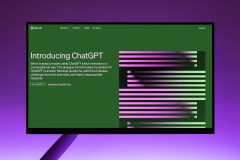To help today’s students improve their math skills, the National Council of Teachers of Mathematics (NCTM) recommends leveraging technology to engage students. Technology can address different learning styles, plus it provides a way to make learning more entertaining.
Thanks to the ever-advancing technology landscape, there are even more virtual tech resources available for mathematics now available. Recently, Aurora University put together a list of virtual resources that can assist with teaching math that included some innovative approaches.
Tech For Math
Here are some of the latest tech resources for math:
- Desmos has a free web-based graphing calculator that is comparable to the scientific calculators that typically cost $100 or more, saving students (and their parents) considerable money. The company also has digital math activities for middle and high school students. These include interactive math lessons that can be downloaded to a mobile device.
- EquatIO is a free tool for math teachers to create mathematical equations, formulas, and graphs on computers or Chromebooks to use for their students as a lesson or additional practice.
- Kahoot! is an interactive game that uses multiple choice questions. This enables students in the same classroom to compete against each other while reinforcing the math lessons they are learning.
Online and SMART Board Math Games
Teachers also can access free math websites that use numerous gamification methods to help teach and engage kids at the elementary school level. For example, Arcademics.com uses Common Core math standards and features various arcade-style games that focus on concepts like math functions, fractions, and algebra. Also, Math Playground features math and logic games, arcade-style activities, and math videos.
Classrooms that have SMART boards can use sites like SMART Exchange and iSmartboard.com to access thousands of math lessons by grade level. Many teachers have submitted their own games and activities to these sites to help other teachers like themselves promote math as a fun learning experience.
Additional Math Tech Resources
Other math tech resources provide further ways to enhance math teaching and learning experiences. For example, Sumdog is an adaptive learning tool designed for elementary and middle school students. The game-based learning framework allows students to participate through computers or tablets as well as provide a rewards-based system that encourages students to keep learning. Teachers can access subscription-based programs on Sumdog’s website.
To build on the competitive spirit of many students, VmathLive offers online mathematics competitions for elementary and middle school students. Pricing is based on students or a class of up to 25 students.
While you may already use YouTube as a source for so many things, the platform has also focused on online learning courses, including those related to numerous math concepts. YouTube channels include Khan Academy, Mathademics, and Numberphile. Of course, math teachers can also make and upload their own YouTube videos to help their students.
Tips For Engaging Students in Mathematics
To make the most of these virtual math resources, it’s essential that teachers understand how to use them strategically, aligning the resources with curriculum standards and goals related to student learning goals. This may require further education for teachers, including an online master’s in mathematics education, which provides a deeper understanding and application of how to apply math learning initiatives and technology resources to engage students in their mathematics lessons.










